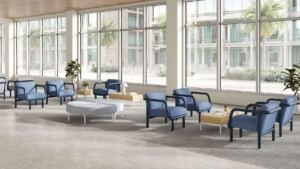
Hotel furniture serves more than just a decorative purpose—it shapes the guest experience by offering both style and relaxation. While an eye-catching design improves the visual appeal of a space, comfort is what keeps guests satisfied throughout their stay.
Striking the perfect balance between aesthetics and comfort ensures that hotels create inviting environments that are both functional and visually impressive. Thoughtful selection of hotel furniture in Dubai helps achieve this harmony, making every space welcoming and practical.
Considering ergonomics in design:
A stylish chair or sofa may look appealing, but if it lacks ergonomic support, guests will not enjoy using it. Furniture should be designed to provide proper posture support, especially in seating areas like lobbies, restaurants, and guest rooms. Ergonomic designs improve relaxation while complementing the overall interior aesthetic.
Choosing materials that blend beauty and durability:
The materials used in hotel furniture should align with both design themes and practical needs. Plush fabrics, rich wood tones, and sleek metal finishes add sophistication, while durability ensures longevity. Hotels should opt for high-quality upholstery and scratch-resistant surfaces to maintain an elegant look without frequent maintenance.
Creating a cohesive design theme:
A hotel’s furniture should reflect its overall style, whether modern, classic, or eclectic. The design should smoothly integrate with lighting, flooring, and décor elements to create a unified aesthetic. Thoughtfully curated furniture improves the atmosphere, making the space feel luxurious and well-planned.
Ensuring flexibility and functionality:
Modern hotel spaces often serve multiple purposes, requiring furniture that is adaptable. Foldable tables, modular seating, and multifunctional pieces provide flexibility while maintaining visual appeal. This approach increases space efficiency and allows for quick reconfigurations based on guest needs.
Improving comfort without sacrificing style:
Hotels can achieve comfort without compromising on style by selecting well-padded seating, plush mattresses, and inviting lounge areas. Textured cushions, layered fabrics, and adjustable seating add warmth and relaxation while maintaining a sophisticated look.
Balancing luxury with practicality:
Luxury furniture should be both visually impressive and user-friendly. Soft lighting, elegant textures, and well-placed furniture arrangements improve guest comfort while maintaining an upscale ambiance. A well-balanced design ensures that guests experience both indulgence and ease.
By carefully selecting hotel furniture that blends aesthetics with comfort, hotels can create an inviting environment that improves guest satisfaction and elevates the overall experience.




